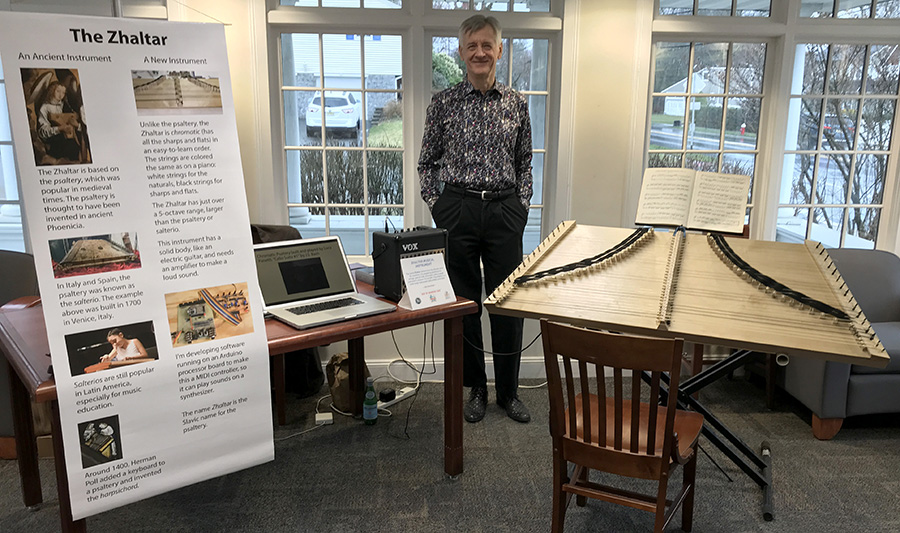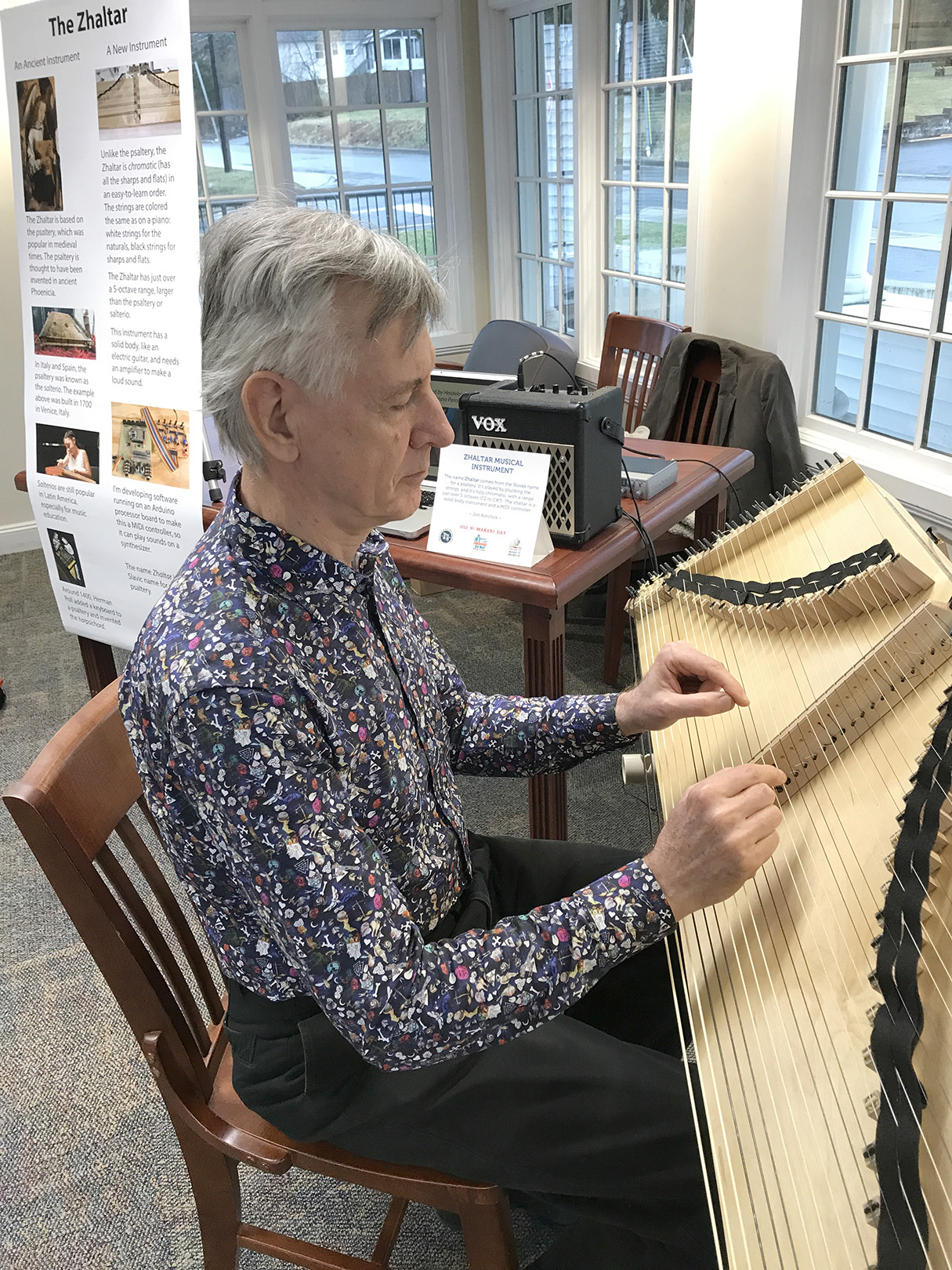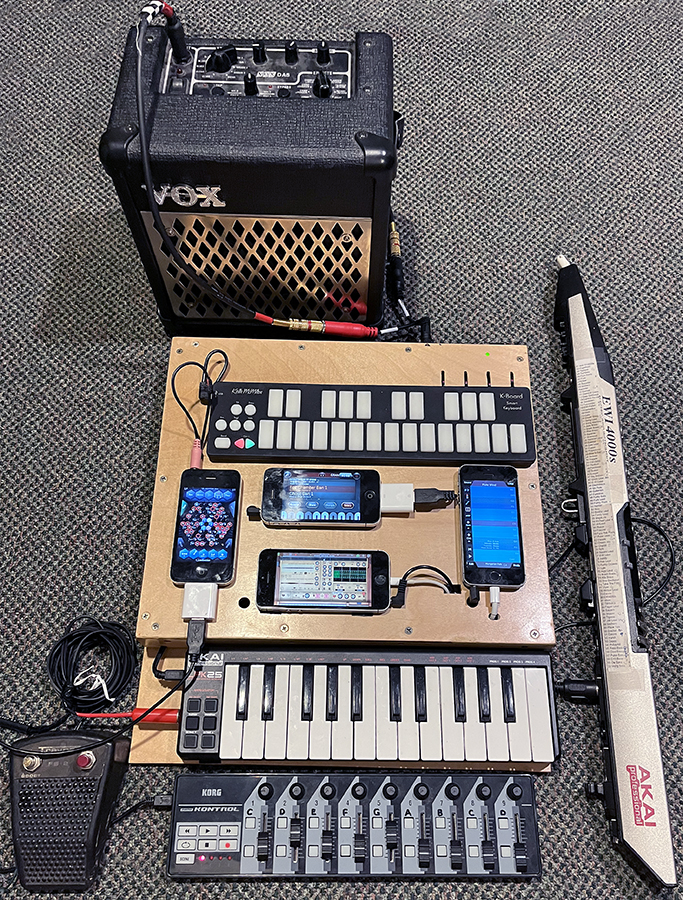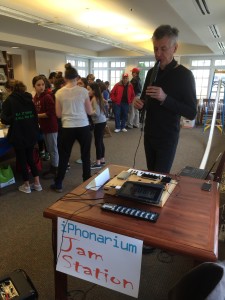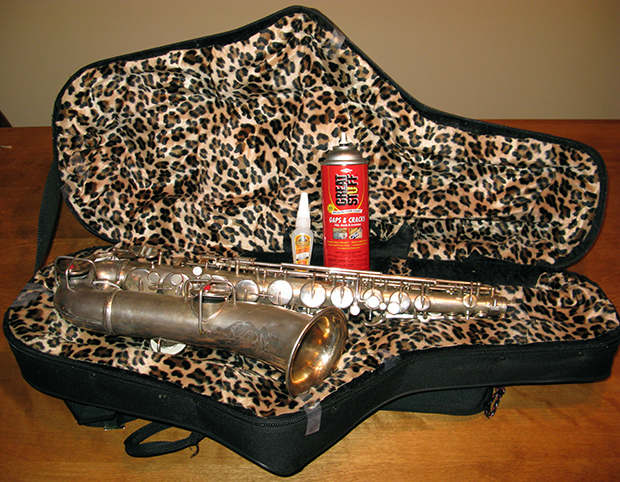1-100 by Michael Nyman
1-100 by Michael Nyman, Notes by John Korchok
Arranger Notes:
1-100 is one of Michael Nyman’s first serious compositions. It was recorded on the Decay Music album in 1976 with Brian Eno producing and was initially released on Eno’s Obscure imprint. The tape was slowed to half speed in the mastering, so the original recording is an octave lower and twice as long as the original performances. The Decay Music cut include 4 separate unsynchronized performances of the score superimposed on each other.
The releases of the Obscure label were unfortunately pressed with low-quality recycled vinyl, so digital recordings made from the first release have a great deal of background noise. In 2004, Universal Music Group released digitally remastered versions at both the slow speed of the original vinyl and at the original tape speed.
Fortunately, I’ve been fooling around with new music long enough that I have an ancient photocopy of Brian Eno’s essay Generating and Organizing Variety in the Arts. I got this in the 80s when photocopies were an important way of distributing ideas, before the Internet was a thing. This photocopy has Michael Nyman’s original score for 1-100 as performed on the Decay Music album. Here’s a scan, click on the image to get a high-res version suitable for printing:
The instructions at the bottom specify “Dynamic should be constant throughout”, but Nyman’s performance is not particularly constant.
Here’s my transcription of this version: 1-100 Original Recorded Version.
And here’s the score for the later version that Nyman wrote after Decay Music was released. This is the edition I play. 1-100 Rewritten Version
– John Korchok
Notes from the record cover of Decay Music, with 1-100 on side 1:
1-100 was composed on 19 December 1975 as a sound track for a film by a friend of mine, Peter Greenaway. This film consisted of the numbers one to a hundred, shot in an assortment of locations and contexts and edited in sequence. Peter Greenaway asked me to find some musical parallel for this additive arithmetic process and, additionally, to provide a rhythm to edit the numerical sequence to.
Since the idea of simple accumulative growth interested me, and since the photographed figures would also contain a variety of other “incidental” images making for a wider system of references, I initially considered systematising (or desystematising) previously composed music, either as a collage or something more straightforward. At the time I happened to be examining the Blue Danube Waltz and to have discovered in its history two curiously linked experimental features: as multiplicity (the performance that Strauss himself conducted at the 1872 Peace Jubilee in Boston with a reputed 1000-piece orchestra and a 20,000-strong choir), and as uniformity (Schoenberg’s criticism of the shameful absence of rhythmic and melodic variation in the first six phrases of the opening of ‘the otherwise very beautiful Blue Danube Waltz’.)
I idly began counting the number of bars in the first section of the Blue Danube and discovered, to my surprise, that it was precisely 100 bars long. Consequently I conceived the idea of building the piece up bar by bar – the first bar, then the first two, then the first three, etc. until the whole hundred bar structure was complete (rather after the manner of Frederic Rzewski’s Les Mountons de Panurge). However, this would have exceeded the film’s length many times over (and it has since become the sound track of another Peter Greenaway film), so I rejected it in favour of a similar procedure with 100 chords. That too would have taken too long, so I was left with 100 chords, each played once only, in sequence.
The choice of chords themselves relates to my current preoccupation with the traditional harmonic language, most especially with isolating some specific feature of functional harmony. What interests me most are closed, cadential progressions, whose final chord naturally joins on to its beginning, so that the sequence can be extended endlessly through repetition. (The principle behind the chaconne, passacaglia and ground bass).
The 100 chords of 1-100, however, are built on a harmonic procedure which in traditional usage is usually finite – that is, they end with a cadence establishing a new key or confirming the old one, but which can be extended by simply continuing the chord-to-chord root progression – sequences rising a 4th and falling a 5th. In Vivaldi the chords used above these thrilling but commonplace progressions are either triads of 7th chords. In 1-100, I have arranged individual sequences to correspond roughly to the numbers 1-9, 10-19, etc., while the overall grouping of sequences corresponds broadly to the gradual numerical accumulation from one to 100. Thus the first ‘section’ alternates triads and major 7ths. 10-19 has chains of 7ths, 20-29 7ths and 9ths, etc. Generally, 1-59 consists mainly of major 7th-based chords while the later sequences are a mixtures of minor and dominant 7ths, 9ths and 11ths.
Similarly, the procedure for playing this unbroken chord series is also designed to correspond, in a mild kind of way, to the numerical accumulation. I made the means of creating a variable editing rhythm for the film dependent on acoustic factors – that is, the density of the chords (starting in the higher part of the piano register and progressing gradually to the low register, the chords themselves gradually getting denser), and the uniformity with which I was able (or unable) to play the chords. The duration of each chord was dictated by the length of the decay of the sound: one chord followed the previous one either during the last stages of decay or when it had died away completely. The register and density of the chords guarantees that durations get progressively longer as the piece goes on.
The recorded realization of 1-100 consists of four unsynchronized superimposed readings. What interests me about musical processes is the fact that one can precisely specify the material and method of articulation, and yet leave the system open in some way to bring about something more than mere unprogrammed incidentals: rather the complete transformation of the material, the effacement of the ‘given’ identity. This was a pleasantly unexpected consequence of making the four ‘blind’ (deaf?) superimpositions on the 100-chord sequence. Thus not only are entirely unforeseen, accidental concurrences and staggered sonorities thrown up, but the original harmonic rhythm, the expected resolution of ‘dissonant’ chords, disappears almost entirely too.
– Michael Nyman
From wisemusicclassical.com online listing of the score:
Composed in 1976, 1-100 for multiple pianos demonstrated a curious confluence of free and fixed musical processes. The fixed systems control the background harmonic language and overall textural density (each player reads from the same written sequence of 100 sustained chords, rigidly arranged in the familiar baroque sequential standby of ‘roots rising a 4th, descending a 5th’, starting at the top of the keyboard and inexorably and slowly spiralling to the bottom). The free(-ish) process is designed to create unwritten harmonic (and rhythmic) divergences by overlapping the juxtaposition brought about by the fact that each individual reading of the chordal text is independent of those of the other players, since each pianist may only move to the next chord after the preceding one has decayed. Individual touch and hearing are therefore indeterminate factors causing the desired out-of syncness as the overall motion of the piece decelerates – as the chords get lower, they get thicker and the decay process slower.
– Michael Nyman
“Opening” from Glassworks by Philip Glass – Corrected Score
I was under the impression that the Sheet Music Plus company was a reputable source of musical scores when I bought a PDF copy of Philip Glass’ Opening from them. I was wrong! The score had at least 6 mistakes! I struggled for months with it, until I listened to Glass play it (many, many times) and identified the errors. This was not a quick process, mostly because I trusted that Sheet Music Plus must be selling accurate copies. It took me from last August 2022 until May 2023 to get it all figured out.
When I contacted Sheet Music Plus to notify them of the mistakes and request a refund, they dismissed me out of hand. There were no refunds on PDFs, period, even defective ones. After I posted several negative online reviews, then they replied that I should have notified them immediately. Well, I just couldn’t figure out the problem immediately, I’m not that great a musician!
So, for anyone else who’s been burned on this score, here’s a corrected PDF. If Philip Glass requests its removal, I will comply. “Opening” from Glassworks by Philip Glass – Corrected Score
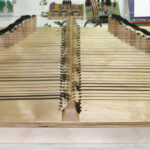
Introducing the Zhaltar
I started designing this new instrument at the beginning of 2022 and finally have a playable prototype. The name Zhaltar comes from the Slovak name for a psaltery. It’s played by plucking the strings, and it’s fully chromatic, with a range just over 5 octaves (C2 to C#7). The zhaltar is a solid-body instrument and a MIDI controller.
The strings are colored the same as on a piano. The right-hand and left-hand set of strings are each arranged as a whole-tone scale, with the left hand set being a semitone higher than the right. This means that once you learn a melody, you can easily transpose it by moving it up or down a string.
The strings and pickup contacts are made with Aquila Nylgut to give the sound a lute-like mellowness. The MIDI controller functions are still in development. I’ll post some musical samples, as soon as I teach myself how to play the thing!

The iPhonarium 2022
This is what the iPhonarium has evolved into. This whole rig is be 100% battery-powered, so I can make noise anywhere.
Top to bottom:
Vox DA-5 amp
iPhonarium case with 4-channel mixer, battery pack and MIDI hardware
Keith McMillen K-Board (connects to 4S)
Akai EWI 4000s wind synth (I use it only as a MIDI controller, connects to 5S)
iPhone 4 running JR Hexatone (a classic, but not on the Apple store any longer)
iPhone 4S running Grain Science (love that app)
iPhone 5S running ThumbJam (still on iOS 10, so I can run old 32-bit music apps)
iPhone SE running iVSC3 (fantastic weird noise app)
Akai LPK-25 with foot switch jack mod for sustain (connects to SE)
Ancient Traynor foot switch
Korg iKontrol (connects to iPhone 4)
This the final iteration of this version. Newer iPhone have a larger form factor that will require a rebuild from scratch.
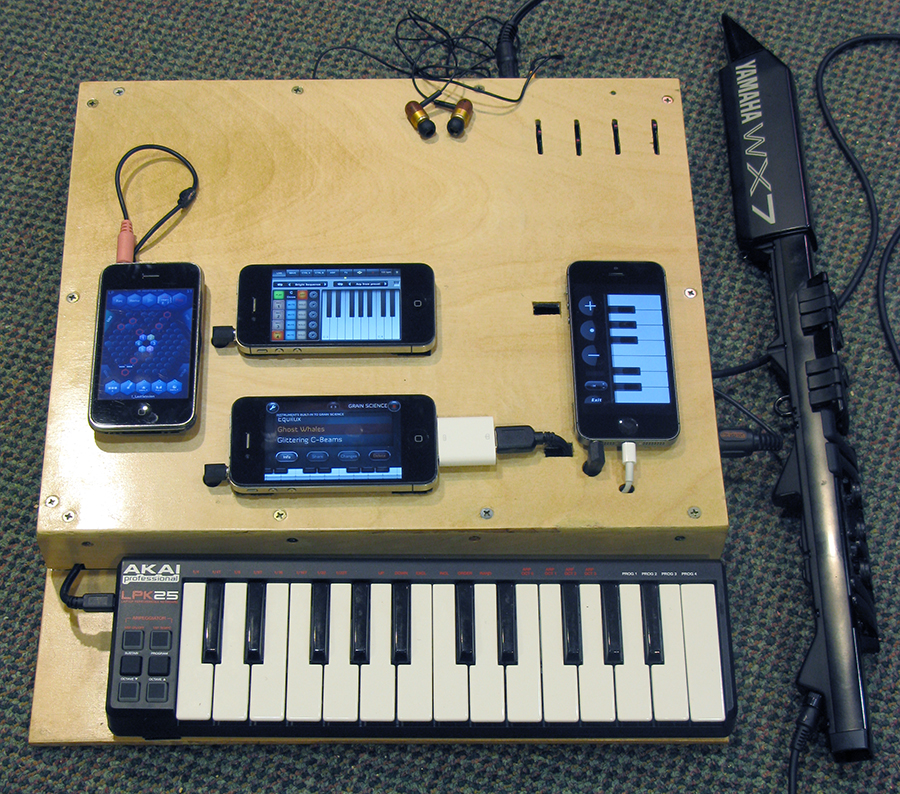
The iPhonarium
A new instrument I’ve developed over a year, the iPhonarium includes 4 interlinked iPhones, mini-keyboard controllers, a wind controller interface and an audio mixer, all in a small wooden box I can carry under my arm. This photo shows an early version, when it only had 1 keyboard:
In effect, I’m running 4 tiny computers each with 24 to 126 music apps on each. There are some really outstanding synth apps out there, covering every different type of sound generation, including my favorite, physical modelling. This gives me great flexibility plus redundancy: if one phone goes down, I can move to another in seconds.
The whole setup, including my amp, is battery-powered, so don’t matter if AC power is available or not. Here’s a video where I accompany poet Janet Hamill. This setup used voice harmonization and 2 keyboard-operated synths:
This synth can also be placed in the center of a small table and played by up to 4 people at once. That’s the Jam Station incarnation. I entered this in the 2016 New Jersey Makers Day and won $50 for “Best Thing That Makes Sound”!
Customized Sax Case
Sometimes the case you have is not optimal for the sax that needs to fit in it: the case could be too generic, it could be old and in need of repair. It could be a low-A bari case that your Bb bari is swimming around in. The example I am using is creating a snug home for a C-melody sax out of a tenor sax case.
To create my custom-fit case, I bought some new lining fabric (I found some cool leopard-print velvet on-line) and an aerosol can of expandable insulation foam from the hardware store. I draped the fabric inside the case with lots of spare fabric to fit into the folds of the case. Then I uncovered one side of the case and sprayed about a 1″ layer of foam all over the inner well where the sax lies. I covered the foam back up with the fabric, then uncovered the other side and repeated the process, filling the well about 1″ deep. This used up the can and I covered the wet foam with the fabric.
Then, with a deep breath, I put the sax into the case, closed it and wrapped it with wire to keep it closed.
24 hours later I opened it: the foam had expanded enough to conform to the shape of the sax, but not so much I couldn’t get the sax out. Whew!
I trimmed the edge of the cloth to about 1/4″ inside the case zipper, then glued down the edges to the old liner fabric with transparent glue. There are a couple of pockets inside the case for the neck and mouthpiece, I cut and glued the fabric to fit as well as possible into them.
The end result is a perfect fit for my sax with absolutely no movement when it is inside the case, plus a custom look for the interior. Here is a photo:
Swabbing out a bari sax
And they said it couldn’t be done!
Homemade Leak Light
For occasional home use, it’s handy for a sax player to be able to check for pad leaks. Here’s one I built for just a few dollars, it’s long enough to check my bari and skinny enough I don’t have to remove any pads to use it.
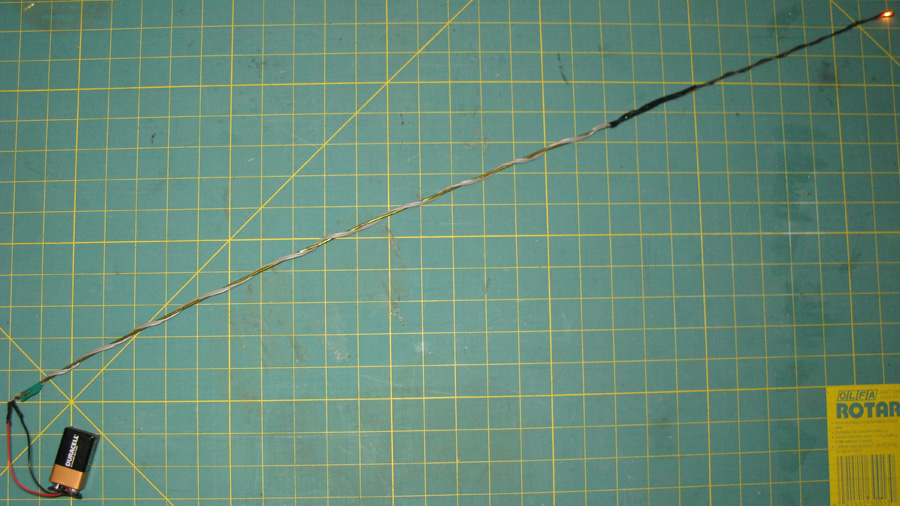
I started with a coat-hanger, straightened it out and bent a small crook at one end.
I wrapped it with two-strand wire. The gauge is not too important. Both voltage and current are low.
At the unbent end, I soldered a battery adapter. 9-volt is convenient because you can just clip it on to turn it on.
At the bent end, I glued a grain of wheat bulb. I used a 12 volt lamp with wire leads. Using it with a 9-volt battery will help it last forever.
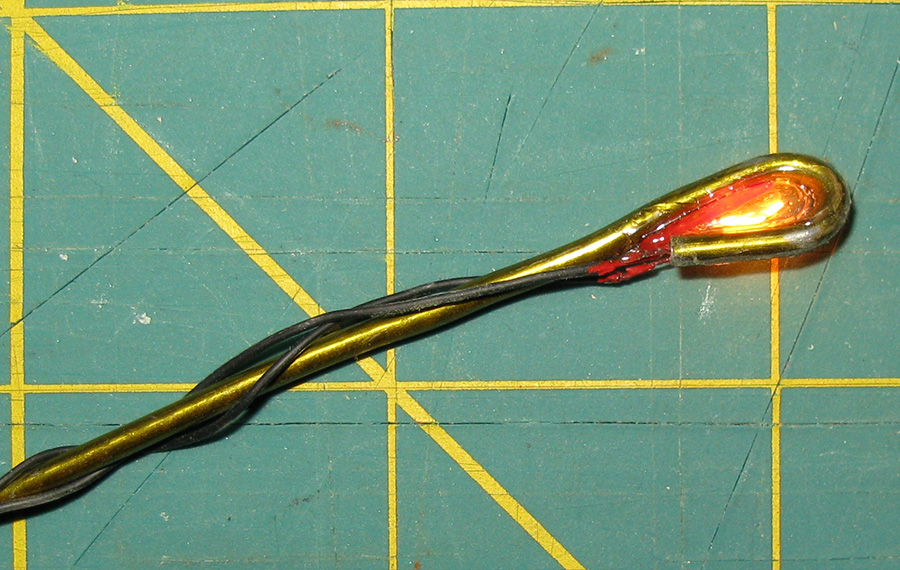
The main down-side is you have to use it in a dark room. Works for me!
Official Facebook plugin for WordPress – SSL Error Solved
This took a day to get working, mainly because of a badly worded Facebook error message. After installing the Facebook plugin on a site, an error message appeared at the top of every Dashboard page:
“SSL must be enabled on your server for Facebook Social Publisher to work.” Seems clear enough doesn’t it?
This WP installation was on a virtual host server, so I studied up on configuring SNI using mod_ssl, created the virtual host section in the Apache config file, bought an SSL cert, installed it, debugged permissions to get the whole thing working. 1 day gone.
Except that didn’t fix the error message! It was still there on each dashboard page. Googling revealed no useful information. So I headed over to the Facebook Developer site to file a bug report. Their bug report form had a bug in it: it would insist you had to enter information in the Tag field, even though I already had done so.
I finally got the answer on the WordPress support forums. It’s nothing to do with SNI or SSL or any of the above. You have to install the curl program to work with PHP on the server. I did so and the error message went away. Talk about a misleading error message… Thanks for wasting my time, Facebook!

